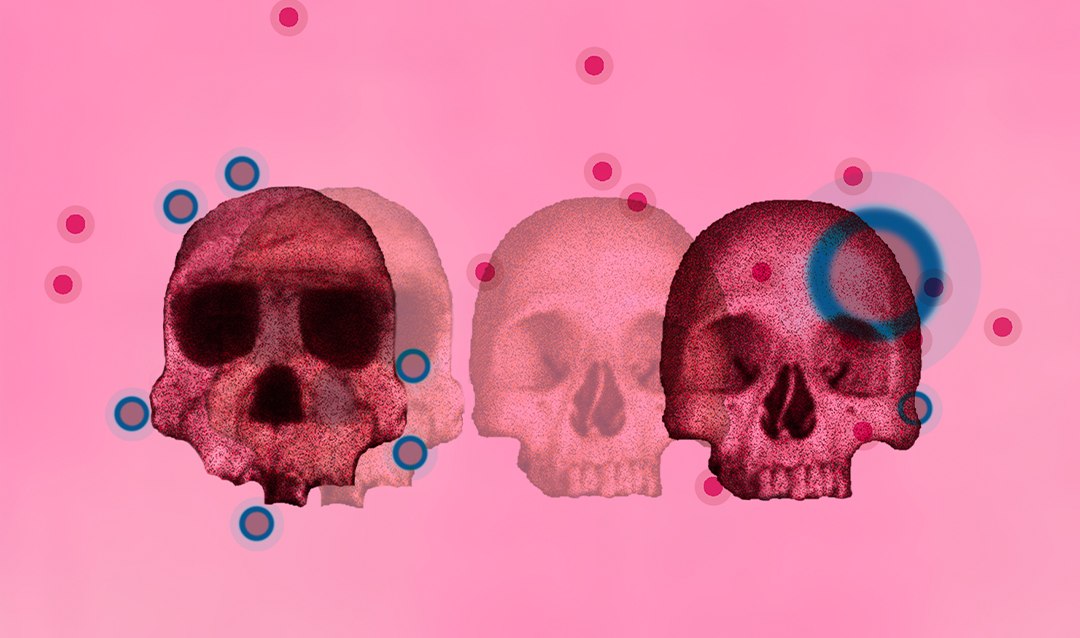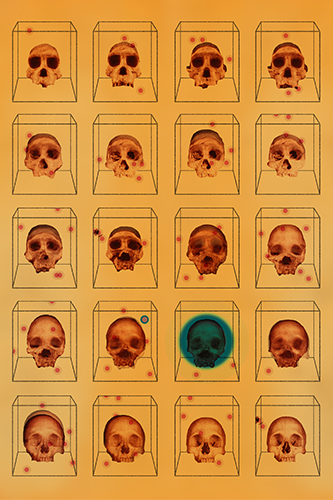“We can actually watch evolution in the lab and ask questions,” Lang says.
Lang and his team freeze the yeast populations following these evolution experiments, creating a “frozen fossil record” of a range of populations at any point in time. This allows them to return to any population, resurrect it, and sequence its genome to determine why its evolution made a detour at a particular time point, Lang explains.
The team extracts DNA from the evolved yeast samples, makes sequencing libraries of the genomes, and sends them to Princeton University, where Lang worked as a postdoctoral researcher before his arrival at Lehigh in 2013. Princeton returns massive amounts of data, which the team then analyzes on Lehigh’s servers to determine how each “ancestor” strain changed both genotypically and phenotypically.
If in their examination of the data the researchers observe a mutation represented more than what might be expected by chance, they will put the mutation from the evolved strain into the previously frozen ancestor strain. They then verify whether the mutation increases the strain’s growth rate or fitness, which is the quantitative representation of natural and sexual selection within evolutionary biology.
This approach allows the team to address questions about adaptive evolution, including its predictability.
In a recent paper published in the journal eLife, Lang and former postdoctoral researcher Sean W. Buskirk, now an assistant professor of biology at West Chester University, and Alecia B. Rokes ’19, currently a doctoral student in microbiology at the University of Pittsburgh, challenge the misconception that evolution is a linear process, presenting evidence of its nontransitive nature. Unlike a transitive evolutionary sequence, in which each successive generation is more fit than its predecessor, in a nontransitive sequence, a less-fit generation might follow a fitter previous generation.
The team, Lang explains, was doing fitness assays, a process through which they compete evolved yeast populations head to head against ancestral strains to determine which is more fit. Evolved strains tend to always beat the ancestor strain, Lang explains. However, in one case, the ancestor defeated an evolved strain.
“It didn't make any sense,” Lang says. “These things have evolved for a thousand generations. How is it worse than when it started?”
Lang and his team discovered a an intracellular “killer virus” within the yeast genome they were using. This virus produces a toxin that kills yeast without the virus. As a yeast population in the Lang Lab evolved, the first step had the virus that produced the toxin. In the second generation, the genome evolved to be more fit, but the killer virus within its cell lost the ability to produce the toxin while maintaining immunity to it. In the third generation, the yeast genome was even more fit and divided even more quickly, but the virus lost immunity due to the absence of the toxin.
“So we have the ancestor which is less fit but produces a toxin that kills things that don't have the immunity component. We have a real fit final strain, but it is sensitive to this toxin,” says Lang. “And so we ended up uncovering mechanistically how you can get these nontransitive effects.
“… Evolution is like that. If you can take organisms today and drop them off 200 million years ago, that doesn't mean they're going to out-compete everything because they've had another 200 million years of evolution. There are lots of these nontransitive interactions. So that was interesting because we could find that in the lab, and that's something that you just couldn't possibly do in a natural population.”
Experimental Evolution & Human Health
Experimental evolution can be applied to human health as well, offering potential for a better understanding of genetic disorders.
“Humans and yeast are quite a bit different,” says Lang, “but, essentially, they have many of the same genes.”
This similarity allows Lang to apply mutations associated with human disease to a yeast strain and observe the outcomes. In a recent study, Lang and his colleagues identified a genetic mutation involved in human congenital disorders of glycosylation (CDG), rare metabolic diseases that lead to a variety of symptoms. They made that same mutation in yeast and conducted evolution experiments, observing that mutation slowed the yeast’s growth.
“What my lab is good at is evolving yeast to overcome slow growth,” says Lang. “And so we did evolution experiments with yeast that contain rare human disease genes, and we identified other genes and pathways where mutations can compensate for these defects.”
Lang and former Lehigh doctoral student Ryan C. Vignogna ’22 Ph.D., now a postdoctoral associate at Cornell University, and colleagues from the University of Campania “Luigi Vanvitelli,” the National Research Council of Italy, Greenwood Genetic Center and biotech Public Benefit Corporation Perlara posted this paper on the biology preprint server bioRxiv. The team is now scaling this work to conduct evolution experiments on another group of rare human diseases.
“We actually were able to identify interactions with human disease genes that were previously unknown. And normally, when people look for interactions with different genes, they delete one and they delete another and they look to see if the deletions interact. But a lot of these human diseases are in genes that are essential, and so you can't actually delete them. And so we were able to get a nice new window on what interactions human disease genes might have.”
As his lab works at the forefront of experimental evolution, Lang continues to be intrigued by the unknown. How do changes in the genome result in changes in an individual?
Can scientists more accurately predict evolution? A deeper understanding of these “inextricably linked” questions could help address a number of problems related to human health.
“Random mutations happen, they change the phenotype, and that's what selection acts on,” he says. “[Evolution] is the most fundamental biological process, yet it's one that we don't understand well at all.”
Gregory Lang’s research interests span evolutionary and molecular biology. He received his Ph.D. from Harvard University and was a postdoctoral researcher at Princeton University’s Lewis-Sigler Institute for Integrative Genomics.






